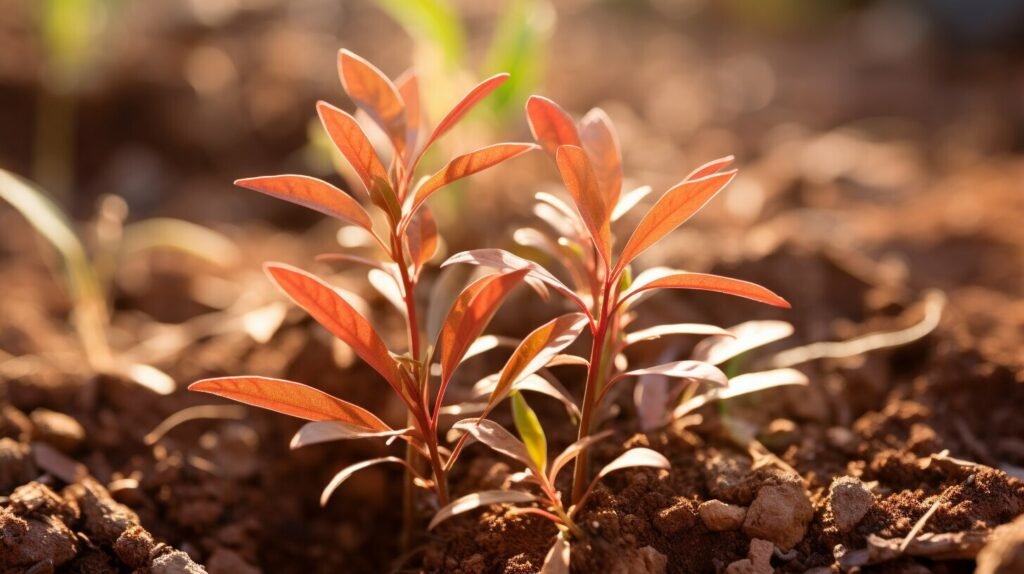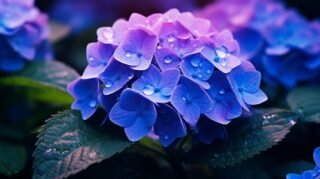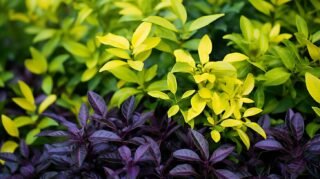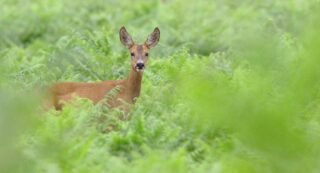Table of Contents
- Common Causes of Nandina Leaves Turning Brown
- FAQ
- Q: Why are my Nandina leaves turning brown?
- Q: What are some environmental factors that can cause Nandina leaves to turn brown?
- Q: What nutrient deficiencies can cause Nandina leaves to turn brown?
- Q: What pests can cause brown spots or patches on Nandina leaves?
- Q: Can diseases cause Nandina leaves to turn brown?
- Q: How can I prevent my Nandina leaves from turning brown?
If you’re wondering why your Nandina leaves are turning brown, there can be several reasons behind this issue. Environmental factors, such as excessive sunlight or heat exposure, cold weather, and frost, can cause leaf scorching and browning. Nutrient deficiencies, including insufficient levels of nitrogen, iron, or magnesium, can also lead to leaf discoloration. Pests, such as spider mites, scale insects, and aphids, as well as diseases like fungal infections, can contribute to brown spots or patches on the leaves.
- Environmental factors like excessive sunlight, heat, cold weather, and frost can cause Nandina leaves to turn brown.
- Nutrient deficiencies, such as insufficient nitrogen, iron, or magnesium, can also lead to leaf discoloration.
- Pests like spider mites, scale insects, and aphids, as well as diseases like fungal infections, can contribute to brown spots on Nandina leaves.
- Proper watering, choosing the right location, regular fertilization, monitoring soil moisture, and pruning when necessary are important for maintaining healthy Nandina plants.
- Monitoring for pests and diseases, maintaining proper soil pH, and protecting from extreme temperatures are also essential.
Common Causes of Nandina Leaves Turning Brown
Several factors can contribute to Nandina leaves turning brown, including environmental conditions, nutrient deficiencies, pests, and diseases. Understanding these common causes can help you identify and address the issue to ensure the health and vitality of your Nandina plants.
Environmental Factors:
- Excessive sunlight or heat exposure can lead to leaf scorching and browning. Consider providing partial shade or placing your Nandina plants in a location with full sun but protected from the intense afternoon heat.
- Cold weather and frost can also cause leaf discoloration. If you live in an area with cold or frosty winters, consider covering your Nandina plants or moving them to a sheltered spot during extreme weather conditions.
Nutrient Deficiencies:
- Insufficient levels of nitrogen, iron, or magnesium can result in brown spots or patches on Nandina leaves. It is essential to fertilize regularly and ensure that your plant receives the necessary nutrients for proper growth and development.
Pests and Diseases:
- Spider mites, scale insects, and aphids are common pests that can infest Nandina plants, leading to leaf browning and damage. Regularly inspect your plants for signs of pest infestation and take appropriate measures to control them.
- Fungal infections, such as leaf spot, can also cause brown spots on the leaves of Nandina plants. Proper sanitation and maintaining good air circulation can help prevent the spread of fungal diseases.
By addressing these common causes, you can effectively prevent and treat brown Nandina leaves. Remember to provide proper watering, choose the right location, fertilize regularly, monitor soil moisture, prune when necessary, watch out for pests and diseases, maintain proper soil pH, and protect your Nandina plants from extreme temperatures. Taking these steps will help ensure that your Nandina plants remain healthy and vibrant, with leaves that stay green and beautiful.

To maintain healthy and vibrant Nandina plants with lush green foliage, it’s important to implement these solutions to prevent and treat brown leaves. If you notice that the leaves of your Nandina plant are turning brown, there are several potential causes and solutions to address this issue.
Environmental factors, such as excessive sunlight or heat exposure, cold weather, and frost, can cause leaf scorching and browning. To prevent this, ensure your Nandina plant is placed in a location with partial shade to full sun, avoiding areas with extreme temperature fluctuations. Providing proper watering is essential, as both under-watering and over-watering can lead to leaf browning. Monitor soil moisture and adjust watering accordingly.
Nutrient deficiencies, including insufficient levels of nitrogen, iron, or magnesium, can also lead to leaf discoloration. Regular fertilization with a balanced fertilizer can help maintain proper nutrient levels and promote healthy leaf growth. Additionally, it is important to maintain the proper soil pH for Nandina plants, as some nutrient deficiencies can be caused by imbalances in pH levels.
Pests, such as spider mites, scale insects, and aphids, as well as diseases like fungal infections, can contribute to brown spots or patches on the leaves. Regularly inspect your Nandina plants for signs of infestation or infection and take appropriate measures to address them. This may include using organic pest control methods or applying fungicides as necessary.
To maintain healthy Nandina plants, it is also important to prune when necessary. Remove any dead or damaged leaves, as well as any diseased or pest-infested parts of the plant. This will help promote new growth and prevent the spread of pests or diseases.
By implementing these solutions, you can effectively prevent and treat brown Nandina leaves, ensuring your plants remain vibrant and beautiful. Remember to provide proper watering, choose the right location, fertilize regularly, monitor soil moisture, prune when necessary, watch out for pests and diseases, and maintain proper soil pH. With these proactive measures, you can enjoy the lush green foliage of your Nandina plants for years to come.
FAQ
Q: Why are my Nandina leaves turning brown?
A: There are several potential causes for Nandina leaves turning brown, including environmental factors, nutrient deficiencies, pests, and diseases.
Q: What are some environmental factors that can cause Nandina leaves to turn brown?
A: Excessive sunlight or heat exposure, cold weather, and frost can all lead to leaf scorching and browning in Nandina plants.
Q: What nutrient deficiencies can cause Nandina leaves to turn brown?
A: Insufficient levels of nitrogen, iron, or magnesium in the soil can contribute to leaf discoloration in Nandina plants.
Q: What pests can cause brown spots or patches on Nandina leaves?
A: Spider mites, scale insects, and aphids are common pests that can contribute to brown spots or patches on Nandina leaves.
Q: Can diseases cause Nandina leaves to turn brown?
A: Yes, fungal infections can lead to brown spots or patches on Nandina leaves.
Q: How can I prevent my Nandina leaves from turning brown?
A: To maintain healthy Nandina plants, provide proper watering, choose the right location with partial shade to full sun, fertilize regularly, monitor soil moisture, prune when necessary, watch out for pests and diseases, maintain proper soil pH, and protect from extreme temperatures.







